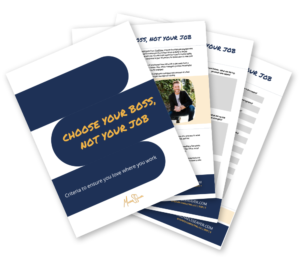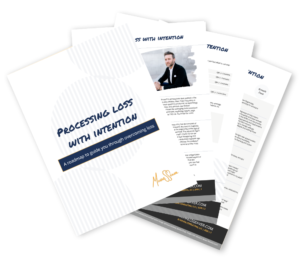This article was first published on the BestCompaniesUSA Institute website.
I’m amazed at how traditional learning institutions have evolved in the last decade. Universities are altering their knowledge delivery experiences to keep up with advances in technology, globalization and social norms. In the Phoenix area, the Thunderbird School of Global Management recently announced it is closing its Glendale campus and relocating to downtown Phoenix. In 2015, Arizona State University’s W. P. Carey School of Business began offering its full-time MBA degree for free. Through its Global Freshman Academy partnership, edX and ASU remove barriers to learning by offering college credit for free until a student has passed a course. Then, and only then, does the student pay.
The organizations we learn from are evolving, but are the organizations we work for evolving how they educate their employees similarly?
I believe organizations truly desire to find unique ways to educate their teams. There’s too much at stake for them not to. The unemployment rate is low. The millennial generation changes jobs every 18 months. Employee disengagement severely limits productivity and revenue potential. The trick becomes facilitating employee growth in a manner commensurate with the way the employee learns, not simply the way the organization currently offers learning opportunities. I call this mass customization – an organization’s ability to offer an a la carte menu of development options that meet an employee where he or she is at a specific point in time.
The Center for Creative Leadership developed a blended learning approach that explains human learning well. It’s called the 70-20-10 Rule for Development and offers a practical framework for how you and your employees can distribute time for learning. Let’s review these in reverse numerical order.
The 10% is formal coursework and training. This is quite common and includes rote memorization classroom learning that culminates with a test or assessment. You’ve likely done this yourself through reading books, articles, case studies and white papers for certificate programs, community college courses or university classes. Through this learning, you’re taught theoretical frameworks and strategy. You’re not taught how to execute strategy.
The 20%, developmental relationships, may include networking, mentorship and reverse mentorship, executive coaching, engaging consultants, learning from superiors, peer counseling and joining a professional association. CCL suggests that 20% of your employees’ learning time may come from these informal sources.
The 70%, immersive experiential learning, can include making mistakes, failing, leading cross-functional projects, starting an entrepreneurial venture, taking a horizontal move internally, accepting a part-time job, nonprofit volunteering, vocational training, serving on a board of directors and other challenging experiences. This teaches you how to execute strategy and is extremely valuable in today’s ever-changing business environment.
Each, the 10%, 20% and 70%, has significant value as long as the learning method chosen is aligned with the needs of the employee learning. Take these three steps to mass customize your organization’s learning systems.
Deepen Your Relationships
To start connecting with your employees, first understand they are far more similar than they are dissimilar. Although their learning styles and goals may be dissimilar, they desire to have a credible leader, be trusted, learn continually, have a coach and inherently dislike change being bestowed upon them. Creating connection is about recognizing where she is in her life’s journey and recognizing you likely went through similar ups and downs. Learning new competencies can be challenging, so offering sincere empathy, mentorship, and encouragement through her learning journey helps.
You should want to build trust to understand what items are needed in your organization’s a la carte menu. By having an in-depth and purposeful conversation, you can assess the employee’s current state. Is she an introvert or extrovert? Does she like to spend considerable time with people or prefer to check off task list items? What motivates her to learn and achieve more? How do you get her back on track during a challenging situation? How can you tailor your leadership style to create her ideal work environment? Are her suggested learning goals in alignment with the organization’s strategic objectives? What does she fear? What’s her personal mission and does it align with the organization’s mission?
By having these crucial conversations, you can partner with your employee to set aspirational goals. Most employees want something bigger than themselves to contribute to.
Provide Diverse Resources
Offer an a la carte menu of ways to learn that fit into the 70-20-10 model. Information has been democratized and organizations don’t need to pay for it the way they did 20 years ago. Offering tuition reimbursement (tapping into the 10% above) is a phenomenal benefit, but no longer enough to engage employees who desire to learn via the 20% and 70%. Forming partnerships with massive open online courses such as Udemy, Udacity and Khan Academy, listening to podcasts, opening relationships with gyms and their dietitians, offering challenging cross-functional internal projects, starting a weekly book club and facilitating dialogue on internal electronic discussion boards are interesting and cost-effective options.
YouTube is one of the largest search engines in the world. Are you using it to facilitate learning? Through social media, your employees can communicate directly with subject matter experts and influencers. Are you encouraging employees to direct message them?
Learning success isn’t simply about the resources you offer, it’s also about about the resourcefulness you teach your employees. Will you provide time and pay for employee to learn the same way some organizations pay employees to volunteer with a nonprofit? If so, you’re on the right track to providing the resources your employees need.
Facilitate Individual and Peer Accountability
In 2015, General Electric started to phase out annual employee performance reviews. They replaced the process with a customized app that allowed leaders to enter employee performance data in real time. Does your company still use annual reviews? If yes, why? Although our society still uses annual time management structures, very little business happens on an annual calendar any more.
Employee engagement isn’t having a once-per-year performance discussion. It’s holding your employees accountable via weekly in-person check in meetings. It’s having your employee join a small cross-functional work team and having them meet monthly to drive peer accountability. I work with a client, Alison, who used peer accountability to overcome her fears, learn how to manage her time well, take risks and discover alternative and more productive paths. This group made her a better leader, taught her how to grow her team and beat her budget. As a result, she received a title change and raise.
In a world changing rapidly, organizations who move to facilitating immersive experiential learning will attract and retain key talent. As you consider how you’re going to create connections with your employees, remember that we can’t simply offer one or two learning benefits. We need to remain focused on facilitating our employees’ professional development in a manner commensurate with the way the person learns, not simply the way the organization currently offers learning. The Center for Creative Leadership’s 70-20-10 Rule for Development offers a meaningful framework for how organizations may distribute their employees’ time when learning.
How can the organization you work for offer a mass customized a la carte menu of employee learning alternatives that meet an employee where he or she is? How can you look in the mirror, reflect on the learning you would’ve enjoyed when you were in that person’s shoes, and provide that support to help your employees grow through the accomplishment of your organization’s objectives?
Will your organization lead through change the same way Thunderbird, W. P. Carey and edX are? If so, you’ll reap the benefits of recruiting, engaging and retaining key talent that makes you a top company to work for.
That seems like a worthwhile investment.






Connect with me